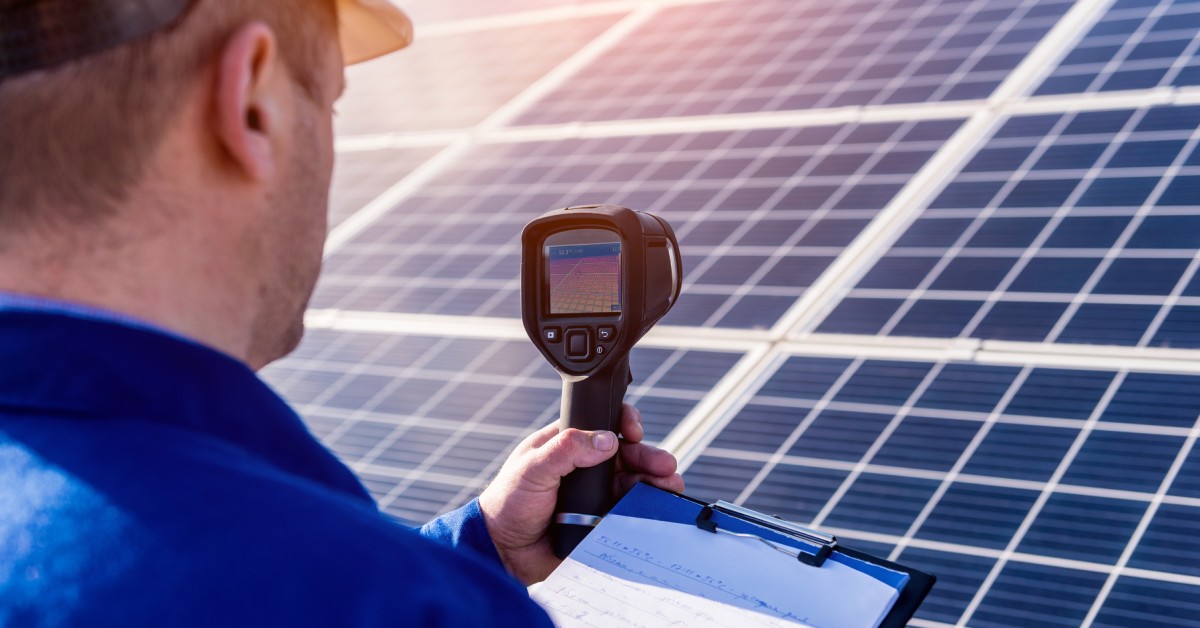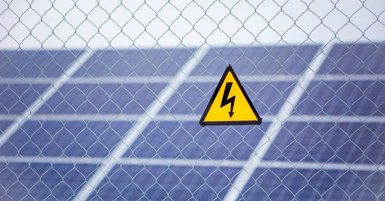Nov 6th 2024
How Labels Simplify Monitoring Your Solar System’s Health
Your solar grid provides you with the energy you need to power your business to its maximum potential. As you continue to use this system, it becomes susceptible to the wear and tear that can come from age or weather conditions.
Routine maintenance will keep the system functioning properly, but these maintenance visits can take time and money. Simplify the process by adding useful solar labels to monitor your solar system’s health.
These labels identify different parts of your solar system so that professionals can easily access any parts that need repairs or maintenance. Read further to find out how these solar labels can benefit your business.
Types of Labels Used in Solar Systems
There are different types of labels that identify parts of your solar grid. The use of labels is a safety measure that contributes to the overall efficiency of your system and repairs. The three types of labels include identification labels, warning labels, and performance labels.
Identification Labels
Identification labels indicate specific functions of primary components in your solar field. These labels may identify elements such as the panels, inverters, and batteries. Labeling these areas allows technicians to easily troubleshoot the components and identify any problems leading to inefficient performance.
Warning Labels
Warning labels are necessary for everyone who interacts with the system. They provide clarity and warn readers about certain areas that have high voltage. These labels mitigate injuries and accidents caused by electrical burns.
Performance Labels
Performance labels are references you can look back on to determine if your current output lines up to the expected levels. These labels typically describe the voltage levels, temperature ranges, and energy output from your system. By referring back to this information, you can make any necessary adjustments or contact a specialist for repairs when needed.
The Basics of Solar System Health Monitoring

With so many different parts within the solar system, you will need these labels throughout the unit. Without these labels, the system could become a hazard to your staff or any technicians. Monitor your power output, voltage, and temperature levels while protecting those on your property with the help of effective labels.
Power Output
Your labels will specify the energy output your system should produce within a given timeframe. Regularly inspect the levels you receive and compare these statistics to what your labels show on your system. Any inefficiencies or declines could be the result of a malfunction in the grid.
Voltage and Current
Voltage and current are important aspects to label on your solar grid. Any fluctuations in performance could lead to costly repairs or even hazardous electrical currents in the system. Keep a close eye to prevent any damage or injuries caused by high voltage.
Temperature
Any parts of the system that may reach high temperatures require proper labeling. Recording these temperatures and areas ensures that your system isn’t overworking and helps you determine where to install cooling measures if necessary. Monitor your temperature levels and cool down the areas that need extra support, especially during the warmer months.
How Monitoring Benefits System Performance
Monitoring your system prevents hazardous repairs, but it also optimizes your system’s performance. With proper labeling, you can boost your solar grid’s overall efficiency and keep track of the metrics necessary to keep the system running.
Optimize Energy Production
If you need to make any necessary adjustments in the system, these solar labels will guide you toward success. Check your solar grids peak capacity and compare the data over time. This real-time data will tell you when your system achieves the maximum amount of sunlight throughout the day so that you can takes steps to boost your energy production.
Reduce Downtime
Labels provide the blueprint for technicians to quickly detect and resolve any issues and finish the job strong. You can schedule timely repairs and minimize the downtime necessary finding parts in the system. Avoid any unexpected interruptions by completing repairs and keeping the system operational.
Increase Lifespan
With these components conveniently identified, you can expect less wear and tear on your solar grids. Proper maintenance boosts the system’s longevity and efficiency so that you can continue to use its energy for years after installation. Perform routine maintenance and smaller repairs to prevent severe replacements down the line.
How Labels Enhance System Maintenance and Health Checks

When your technician inspects your solar system, they must navigate all kinds of electrical and mechanical components to determine potential issues or repairs. These labels simplify the maintenance process, ensuring your solar system remains in good health. Install solar labels to offer them clear guidance regarding your specific grid.
Providing Clear Instructions
While your technicians are well-versed in installations and repairs, each solar grid has its unique features that help it cater to your business’s needs. Solar labels provide all the instructions necessary for locating and detaching certain components in the system. This information minimizes confusion and downtime during a maintenance visit.
Enhancing Safety
Solar labels outline any hazardous parts, such as electrical currents or sharp ends, to mitigate accidents during repairs. Using labels also makes it safer to troubleshoot components when repair specialists disconnect certain wires. Foster a safe work environment by installing solar labels for clarity.
Facilitating Quick Checks
Easy-to-read labels allow for rapid assessments of system status and functionality. Some labels come in multiple languages for easy readability and accessibility. Quickly resolve any issues in the system before they turn into more severe repairs by keeping information visible.
Ensuring Labels Comply With Safety Standards
Some areas require business to display safety labels to maintain a safe and compliant business. Abide by these regulations and include all the criteria they call for on your solar labels.
Meet Industry Standards
Reputable organizations such as OSHA and IEC include solar labels in their guidelines for workplace safety. If your industry falls under one of their categories, install solar labels to protect staff and remain compliant with their regulations. This measure will help you avoid any legal fees in the future.
Color-Code the Labels
Some areas require your solar labels to follow their color-coding signage for hazardous materials. For instance, red is something American businesses often use for warnings or hazards, while yellow might indicate a need for caution. By implementing a color-coding system, you make it easier for individuals to quickly comprehend the level of risk and the necessary actions to take.
Include Contact Information
Leave your business’ contact details and emergency service numbers on the solar labels. This way, there is a point of contact for the business as well as instructions for contacting safety officers or emergency responders. Prepare for the unexpected by adding these details to your solar system.
Solar labels perform many useful functions to keep your system working efficiently after years of use. They act as a guidebook for repairs so that you can reduce downtime and increase your energy output to its maximum potential. Get the most out of your solar grid by implementing these signs across all the significant components within the system.
After considering all these factors, practice a safe workplace by investing in your own solar tags for your solar system. This way, you, your company, and any technicians can stay compliant and safe as you navigate solar grid ownership.

